SSP Group Bundle
Who Really Controls SSP Group?
Unraveling the ownership of SSP Group, a global powerhouse in travel food and beverage, is key to understanding its strategic moves and future potential. From its humble beginnings as a division of SAS to its current status as a publicly traded entity, the company's ownership journey reveals a fascinating evolution. Discover the key players and influences shaping the future of this industry leader.
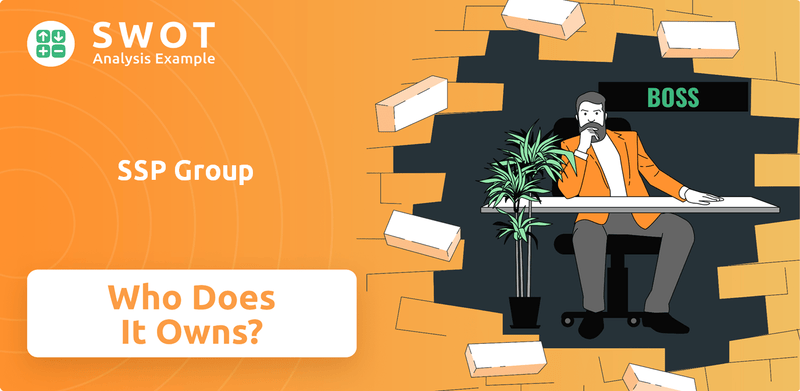
SSP Group, a prominent player in the travel sector, operates a vast network of food and beverage outlets across airports and train stations globally. Understanding the SSP Group SWOT Analysis can provide valuable insights into its market position. As a publicly listed company (SSP plc), its shareholder structure and the influence of its board of directors are critical factors impacting its business decisions and financial performance. This analysis will explore the intricacies of SSP Company Ownership, providing a comprehensive view of who owns SSP and its implications.
Who Founded SSP Group?
The origins of SSP Group, formerly known as Select Service Partner, trace back to 1961. It began as SAS Catering, a division within the Scandinavian airline SAS Group. Initially, the company's primary focus was on providing catering services within transportation hubs.
Early ownership of SSP Group was intrinsically linked to its parent company, SAS Group. While specific details regarding the individual founders' equity split or initial shareholding percentages are not readily available, the company's early operations were under the control of SAS.
A significant shift in ownership occurred in May 1993. Compass Group acquired the Select Service Partner (SSP) division from SAS for £72 million. This acquisition marked a transition from an airline division to a part of a larger foodservice conglomerate. The early vision, particularly under Compass Group, likely centered on consolidating and expanding its presence within the travel catering sector through strategic mergers and acquisitions.
SSP Group's history began as SAS Catering in 1961, a division of the SAS Group. The initial focus was on catering services within transport hubs.
In May 1993, Compass Group acquired the SSP division from SAS. This acquisition was a major turning point for the company.
Compass Group aimed to consolidate and expand its presence in travel catering through strategic moves.
The early vision under Compass Group likely focused on mergers and acquisitions to grow within the travel catering sector.
Initially, SSP Group's scope was limited to providing catering services within transportation hubs.
The early ownership was closely tied to SAS Group, the parent company at the time.
Understanding the historical ownership of SSP Group, and who owns SSP, is crucial for grasping its evolution. Today, SSP Group is a publicly traded company. For those interested in a deeper dive into the company's marketing strategies, consider exploring the Marketing Strategy of SSP Group. As of 2024, SSP Group operates in numerous countries, with a significant presence in airports and railway stations. The company's revenue in 2024 was approximately £2.8 billion, reflecting its substantial growth since its early days. The company's ownership structure has evolved significantly, with various institutional investors and public shareholders now holding stakes in SSP Group shareholders.
SSP Group's early ownership was rooted in its origins as SAS Catering.
- The acquisition by Compass Group in 1993 was a pivotal moment.
- SSP Group has transformed from a division of an airline to a global player in travel food and beverage.
- The company's current ownership structure involves public shareholders.
- SSP Group's annual revenue in 2024 was around £2.8 billion.
SSP Group SWOT Analysis
- Complete SWOT Breakdown
- Fully Customizable
- Editable in Excel & Word
- Professional Formatting
- Investor-Ready Format
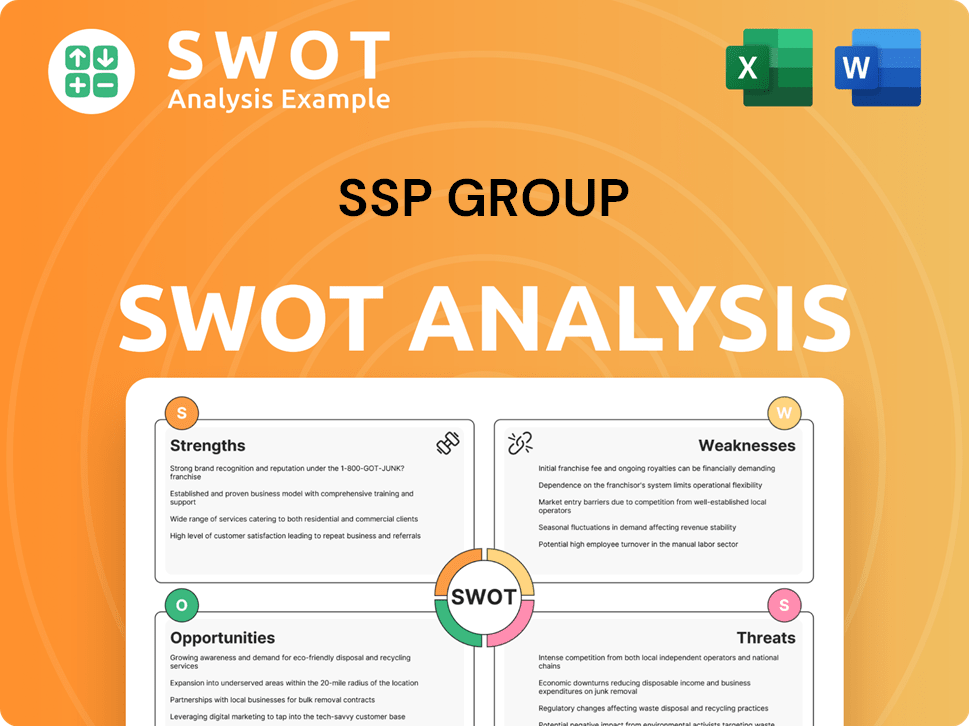
How Has SSP Group’s Ownership Changed Over Time?
The ownership structure of SSP Group has evolved significantly over time. Initially part of Compass Group since 1993, the company transitioned to private equity ownership in 2006 when EQT AB acquired it for £1.822 billion. This phase facilitated global expansion, including entries into the U.S. and Asia, setting the stage for a pivotal shift in ownership.
A critical milestone in SSP Group's history was its Initial Public Offering (IPO) on the London Stock Exchange on July 10, 2014. This event marked the transition from private equity control to a publicly traded entity, strengthening its financial position. EQT subsequently divested its remaining shares in sell-downs during January and May 2015, fully transitioning the company into public ownership. This move allowed the company to broaden its investor base and pursue further growth opportunities. For more details, consider reading Brief History of SSP Group.
| Ownership Phase | Key Event | Impact |
|---|---|---|
| 1993-2006 | Part of Compass Group | Initial operational foundation. |
| 2006 | Acquisition by EQT AB | Private equity ownership; global expansion. |
| July 10, 2014 | Initial Public Offering (IPO) | Transition to public company; strengthened capital structure. |
| January & May 2015 | EQT Sell-downs | Full transition to public ownership. |
As of early May 2025, SSP Group plc (GB:SSPG) has a substantial institutional ownership, with institutions holding 91.9% of shares, totaling 735,392,865 shares. Major shareholders include Vanguard Total International Stock Index Fund Investor Shares (VGTSX), Bridge Builder International Equity Fund (BBIEX), and Harbor International Fund Institutional Class (HAINX). Individual insiders hold a much smaller stake, at 0.438% or 3,506,243 shares. These ownership dynamics have enabled SSP Group to pursue ambitious expansion plans, including acquisitions and market entries in various countries. As of June 2, 2025, the company had 64 institutional owners and shareholders.
SSP Group's ownership has evolved from Compass Group to private equity and finally to a publicly traded entity.
- The IPO in 2014 was a major turning point, allowing for greater financial flexibility.
- Institutional investors hold the vast majority of the shares, indicating strong market confidence.
- Understanding the ownership structure is crucial for anyone interested in SSP Group's stock information and its future.
SSP Group PESTLE Analysis
- Covers All 6 PESTLE Categories
- No Research Needed – Save Hours of Work
- Built by Experts, Trusted by Consultants
- Instant Download, Ready to Use
- 100% Editable, Fully Customizable
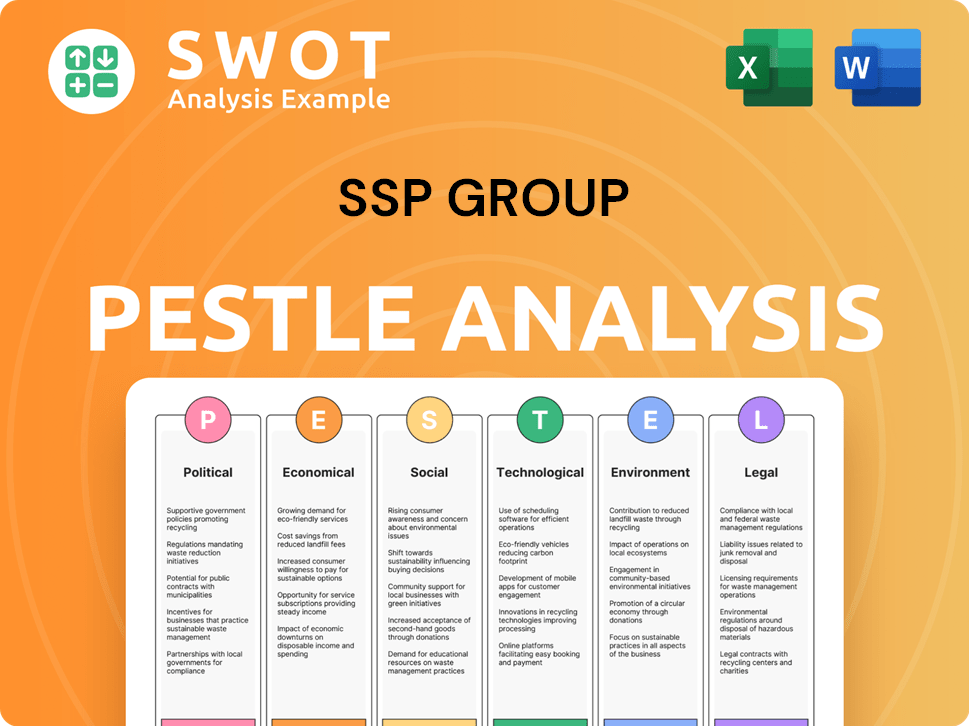
Who Sits on SSP Group’s Board?
The current board of directors of the SSP Group plc is pivotal in guiding the company's strategy and governance. As of June 2025, the board is chaired by Mike Clasper, with Patrick Coveney serving as Group Chief Executive Officer. Jonathan Davies held the roles of Deputy Chief Executive Officer and Chief Financial Officer, though he is set to retire. Geert Verellen was appointed as CFO Designate in early April 2025, indicating a planned transition in financial leadership. The board also includes independent non-executive directors, such as Judith Vezmar, Apurvi Sheth, Carolyn Bradley, Timothy Ralph Lodge, and Karina Deacon, who joined the board on January 1, 2025. Karina Deacon is also a member of the Audit and Nomination Committees.
The composition of the board reflects a mix of experienced executives and independent directors, ensuring a balance of perspectives in decision-making. This structure is typical for a publicly listed company like SSP Group, aiming to provide robust oversight and strategic direction. The presence of independent directors is crucial for ensuring accountability and protecting shareholder interests. The board's role is to oversee the company's operations, approve major decisions, and ensure compliance with regulations. The board's decisions are critical for the company's performance and its ability to adapt to market changes.
| Board Member | Role | Notes | |
|---|---|---|---|
| Mike Clasper | Chairman | ||
| Patrick Coveney | Group Chief Executive Officer | ||
| Jonathan Davies | Deputy Chief Executive Officer and Chief Financial Officer | Set to retire | |
| Geert Verellen | CFO Designate | Appointed April 2025 | |
| Judith Vezmar | Independent Non-Executive Director | ||
| Apurvi Sheth | Independent Non-Executive Director | ||
| Carolyn Bradley | Independent Non-Executive Director | ||
| Timothy Ralph Lodge | Independent Non-Executive Director | ||
| Karina Deacon | Independent Non-Executive Director | Joined January 1, 2025; Member of Audit and Nomination Committees |
The voting structure at SSP Group generally follows a one-share-one-vote principle, which is standard for companies listed on the London Stock Exchange. This means that each share of stock held by an investor carries one vote in shareholder meetings. There is no publicly available information indicating the existence of dual-class shares, special voting rights, or golden shares that would give disproportionate control to specific individuals or entities. Each director is subject to annual re-election by the shareholders, ensuring accountability. Recent activity from activist investors, such as Irenic Capital Management, highlights the influence that major shareholders can wield. Irenic Capital Management has acquired a stake of approximately 2% in SSP Group and is advocating for improved profitability, demonstrating how shareholders can impact decision-making through engagement, even without special voting rights. You can find more about the company's business model in this article Revenue Streams & Business Model of SSP Group.
Understanding the board of directors and voting structure is crucial for investors and stakeholders.
- The board includes a mix of executive and independent directors, ensuring diverse perspectives.
- Voting rights are typically one-share-one-vote, providing equal voting power to shareholders.
- Activist investors can influence company strategy through engagement and advocacy.
- Board members are subject to annual re-election, promoting accountability.
SSP Group Business Model Canvas
- Complete 9-Block Business Model Canvas
- Effortlessly Communicate Your Business Strategy
- Investor-Ready BMC Format
- 100% Editable and Customizable
- Clear and Structured Layout
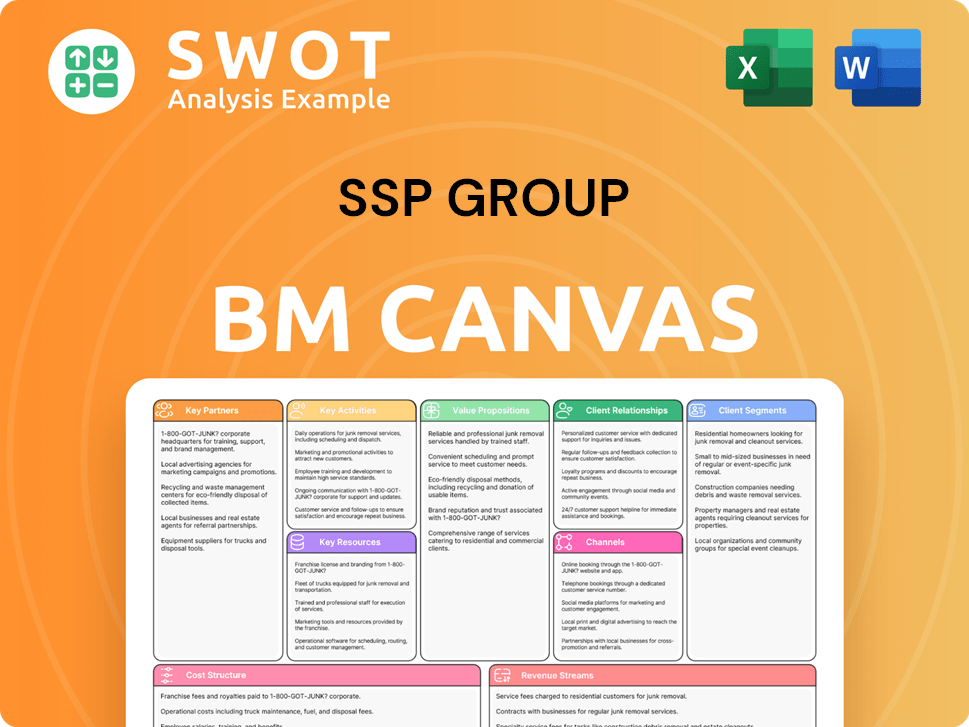
What Recent Changes Have Shaped SSP Group’s Ownership Landscape?
Over the past few years, the ownership structure of SSP Group has seen several notable shifts. A significant development is the planned Initial Public Offering (IPO) of Travel Food Services (TFS), SSP's joint venture in India, which is now slated for summer 2025. SSP currently holds a 49% stake in TFS, a joint venture with K Hospitality Corp. The change in TFS's shareholding, effective June 1, 2024, means SSP no longer controls or consolidates these operations in its reported financial results, leading to an annualized operating profit reduction of approximately £17 million, though the impact on net income is minimal due to offsetting factors. These changes are crucial for understanding who owns SSP and how the company is evolving.
In terms of institutional ownership, as of June 2, 2025, SSP Group has 64 institutional owners holding a total of 71,845,828 shares. Major shareholders include Vanguard funds and other institutional investors. There have been some adjustments in institutional stakes, with APG Asset Management N.V. decreasing its voting rights in SSP Group to 6.9825% (55,900,000 shares) as of January 2, 2025, a decrease from 7.8223%. By January 10, 2025, APG Asset Management's voting rights further decreased to 4.8946%. This data offers insights into the distribution of SSP Group shareholders and the influence of major institutional investors.
| Metric | Details | Date |
|---|---|---|
| Institutional Owners | 64 | June 2, 2025 |
| Total Shares Held by Institutions | 71,845,828 | June 2, 2025 |
| APG Asset Management N.V. Voting Rights | 6.9825% (55,900,000 shares) | January 2, 2025 |
| APG Asset Management N.V. Voting Rights | 4.8946% | January 10, 2025 |
SSP Group has also been actively involved in mergers and acquisitions, such as acquiring the ARE business in Australia in FY24, which added over 60 outlets. Furthermore, a new joint venture with Indonesian food & beverage business Taurus Gemilang in May 2024 marked its entry into Indonesia. These acquisitions, valued at approximately £180 million, are expected to generate annualized revenues of £215 million with 115 new units. For more details on the company's position, you can read about the Competitors Landscape of SSP Group.
Acquisition of ARE business in Australia in FY24, adding over 60 outlets.
Joint venture with Taurus Gemilang in Indonesia in May 2024.
Acquisitions totaled approximately £180 million.
Annualized revenues of £215 million with 115 new units expected.
SSP Group Porter's Five Forces Analysis
- Covers All 5 Competitive Forces in Detail
- Structured for Consultants, Students, and Founders
- 100% Editable in Microsoft Word & Excel
- Instant Digital Download – Use Immediately
- Compatible with Mac & PC – Fully Unlocked
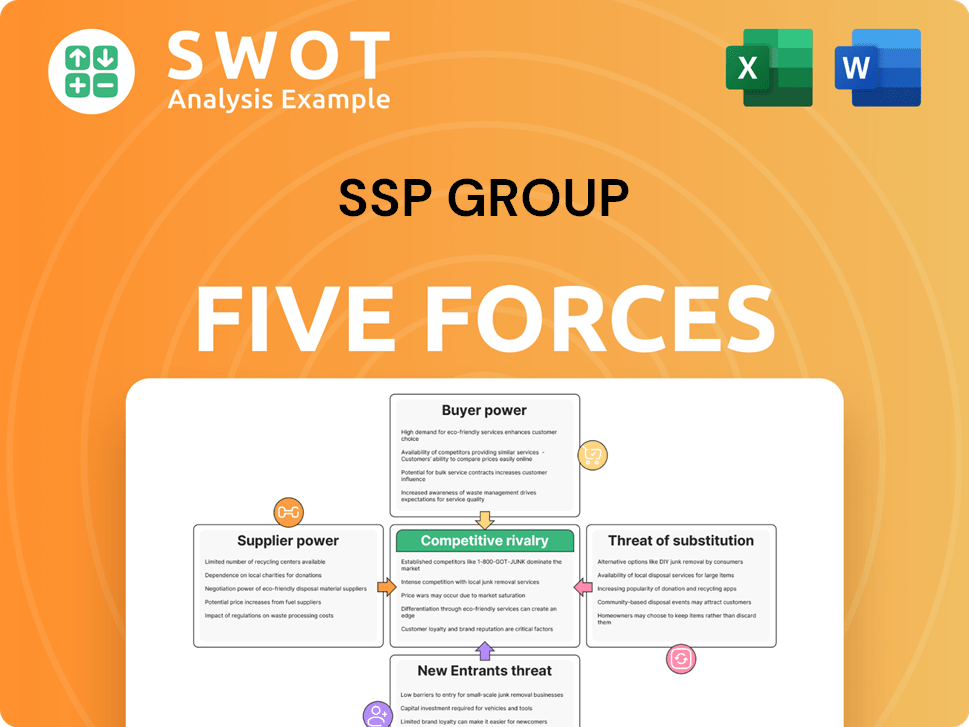
Related Blogs
- What are Mission Vision & Core Values of SSP Group Company?
- What is Competitive Landscape of SSP Group Company?
- What is Growth Strategy and Future Prospects of SSP Group Company?
- How Does SSP Group Company Work?
- What is Sales and Marketing Strategy of SSP Group Company?
- What is Brief History of SSP Group Company?
- What is Customer Demographics and Target Market of SSP Group Company?
Disclaimer
All information, articles, and product details provided on this website are for general informational and educational purposes only. We do not claim any ownership over, nor do we intend to infringe upon, any trademarks, copyrights, logos, brand names, or other intellectual property mentioned or depicted on this site. Such intellectual property remains the property of its respective owners, and any references here are made solely for identification or informational purposes, without implying any affiliation, endorsement, or partnership.
We make no representations or warranties, express or implied, regarding the accuracy, completeness, or suitability of any content or products presented. Nothing on this website should be construed as legal, tax, investment, financial, medical, or other professional advice. In addition, no part of this site—including articles or product references—constitutes a solicitation, recommendation, endorsement, advertisement, or offer to buy or sell any securities, franchises, or other financial instruments, particularly in jurisdictions where such activity would be unlawful.
All content is of a general nature and may not address the specific circumstances of any individual or entity. It is not a substitute for professional advice or services. Any actions you take based on the information provided here are strictly at your own risk. You accept full responsibility for any decisions or outcomes arising from your use of this website and agree to release us from any liability in connection with your use of, or reliance upon, the content or products found herein.